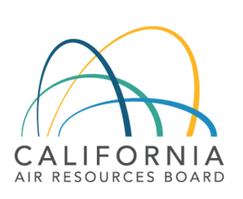The Air Resources Board coordinates California's efforts to reach and maintain the health-based air quality standards, and to protect the public from exposure to toxic air contaminants.
Image

Since its inception, ARB has been charged with overseeing the efforts of local air pollution control and air quality management districts in controlling air pollution caused by stationary sources.
ARB has also been specifically directed to address the serious problems caused by mobile sources (cars, motorcycles, trucks and buses, and off-road vehicles and equipment and the fuels that power them) which are major sources of air pollution in the most populous parts of the state.
ARB is also responsible for controlling emissions statewide from smaller but more numerous sources of air pollution and toxic air contaminants, such as consumer products, lawn and garden equipment and utility engines, as well as other sources.
Implementation
To carry out its responsibilities, ARB has undertaken a multifaceted program of planning, regulation development, and enforcement. This is a complex process which incorporates air quality research, modeling and assessment, development and adoption of regulations through a process which allows public input, and program implementation which includes active outreach to regulators and regulated industries through training and compliance assistance.
The final component, enforcement, ensures that these efforts achieve the anticipated emissions reductions and a level playing field for all participants.
Violations of California's air quality laws and regulations span a wide spectrum that extends from nominal breaches of the state's statutes or regulations to deliberate, criminal actions. While varying degrees of pollution are created by way of these violations, what remains constant in each is the unfair economic disadvantage suffered by those members of the industries that do comply. To address these varying degrees of violation and their effects on the state's health and economic welfare, the Enforcement Division of ARB has adopted the following as its mission statement:
The mission of ARB's Enforcement Program is to protect the environment and public health and to provide safe, clean air for all Californians by reducing emissions of air contaminants through the fair, consistent and comprehensive enforcement of air pollution laws, and by providing training and compliance assistance.
Airborne Toxic Control Measures
The following are the lists of Mobile and Stationary Source Airborne Toxic Control Measures (ATCMs) promulgated by the California Air Resources Board. Each ATCM is codified in the California Code of Regulations (CCR). If you have a question concerning one of the ATCMs, or would like a copy of the corresponding staff report or technical support document, please contact the ARB staff person responsible for that ATCM.
California Air Resources Board
Diesel Enforcement Program
The ARB (not the District) is responsible for developing statewide programs and strategies to reduce the emission of smog-forming pollutants and toxics from mobile sources. These include both on and off-road sources such as passenger cars, trucks, buses, heavy-duty construction equipment and recreational vehicles. For more information about any of the following programs, please see the contact information for specific programs in the descriptions below.
- Commercial Vehicle Idling
- School Bus Idling
- Diesel Emission Control Strategies Verification
- Smoking Vehicle Complaint Program
- Drayage Truck Regulation
- Diesel Truck Fleet Complaint Form
- Heavy Duty Diesel Emission Control Label
- Solid Waste Collection Vehicle Program
- Heavy Duty Vehicle Inspection Program
- Statewide Truck and Bus Regulation
- In-Use Off-Road Equipment Advisories
- Strategic Plan for Diesel Enforcement
- Periodic Smoke Inspection Program
- Transport Refrigeration Units
- REFLASH for Diesel Trucks
Assembly Bill 181-School District Transportation Service Plans
- The Glenn COunty Air Pollution Control District recently learned that all school districts in California are required to consult with their local air district (among others) to develop a plan related to transportation services, to meet the requirements of California Assembly Bill 181. The bill reads in part: “SEC. 14. 39800.1. (b) (1) The plan shall be developed in consultation with classified staff, teachers, school administrators, regional local transit authorities, local air pollution control districts and air quality management districts, parents, pupils, and other stakeholders.”The Air District is here to support your work and available to work with as needed. The Air District does not review these plans; however, we will provide comments if requested. As you work towards the development of your school district’s plan, please note the Glenn County Air Pollution District may be able to assist.
- School districts that receive and consider the information provided on this website and the related document below, are considered to have consulted adequately with the Glenn County Air Pollution Control District and nothing further is needed unless directed by the State. If further consultation is desired, please feel free to reach out to our office.
Related Files
| Attachment | Size |
|---|---|
| AB 181-School District Transportation Service Plans.pdf (382.71 KB) | 382.71 KB |
